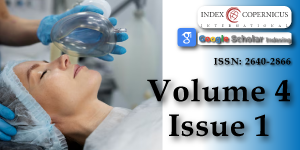Anaesthetic management of an elderly patient with ischaemic heart disease and previous MI undergoing elective inguinal hernia repair: Case report
Main Article Content
Abstract
Ischemic heart disease may occur in isolation, or in combination with the pathological process of vascular ageing, arteriosclerosis. These two conditions have differing impacts on the haemodynamic changes in response to anaesthesia and surgery. Hypertension is not a feature of ischemic heart disease, and vice versa, but where the two conditions co-exist, hypertension aggravates and accelerates the pathological processes of ischemic heart disease. Patients older than 40 yrs. presenting for anaesthesia and surgery must therefore be considered at risk of any combination of these three conditions. Anaesthetic techniques must also be chosen to minimize haemodynamic changes which in the normal healthy patient cause no serious morbidity, but which, in the patient with ischemic heart disease, can lead to serious morbidity or death. Here we report a 70 years old (BMI of 23.3) elderly, hypertensive Male patient with ischemic heart disease with previous MI (EF of 40% - 5%) undergoing elective Inguinal hernia repair. We Opted Spinal anesthesia over General anaesthesia as it should be an asset in cardiac patients undergoing non-cardiac lower abdominal surgeries to reduce preload and after load, stress response, coagulation responses, improves coronary perfusion, provides better postoperative analgesia, reduces incidence of perioperative MI, maintains myocardial oxygen supply demand ratio and avoids harmful effects of GA such as hypotention due to intravenous induction drugs, tachycardia and hypertension due to pressor response during direct laryngoscopy and tracheal intubation.
Article Details
Copyright (c) 2020 Najar KA, et al.

This work is licensed under a Creative Commons Attribution 4.0 International License.
Fleisher LA, Fleischmann KE, Auerbach AD, Barnason SA, Beckman JA, et al. 2014 ACC/AHA guideline on perioperative cardiovascular evaluation and management of patients undergoing noncardiac surgery: Executive summary: A report of the American College of Cardiology/American Heart Association task force for on practice guidelines. Circulation. 2014; 130: 2215–2245. PubMed: https://www.ncbi.nlm.nih.gov/pubmed/25085962
Kristensen SD, Knuuti J. New ESC/ESA Guidelines on non-cardiac surgery: Cardiovascular assessment and management. Eur Heart J. 2014; 35: 2344. PubMed: https://www.ncbi.nlm.nih.gov/pubmed/25086026
Hedge J, Balajibabu PR, Sivaraman T. The patient with ischaemic heart disease undergoing non cardiac surgery. Indian J Anaesth. 2017; 61: 705–711. PubMed: https://www.ncbi.nlm.nih.gov/pmc/articles/PMC5613595/
Kristensen SD, Knuuti J, Saraste A, Anker S, Bøtker HE, et al. 2014 ESC/ESA Guidelines on non-cardiac surgery: cardiovascular assessment and management. The Joint Task Force on noncardiac surgery: cardiovascular assessment and management of the European Society of Cardiology (ESC) and the European Society of Anaesthesiology (ESA). Eur J Anaesthesiol. 2014; 31: 517-573. PubMed: https://www.ncbi.nlm.nih.gov/pubmed/25086026
Guay J, Choi P, Suresh S. Neuraxial blockade for the prevention of postoperative mortality and major morbidity: an overview of Cochrane Systemic Reviews. Cochrane Database Syst Rev. 2014: cd010108. PubMed: https://www.ncbi.nlm.nih.gov/pubmed/24464831

